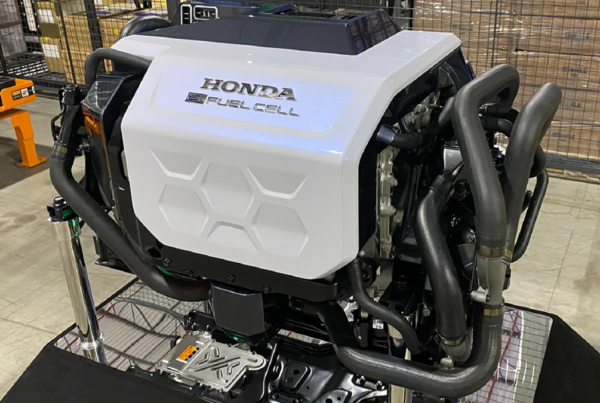
The European Space Agency (ESA) has awarded Prototech AS – a NORCE company – a contract for HERACLES development in the European Exploration Envelope Program (ExPeRT). Air Liquide Advanced Technologies and Airbus Defence and Space are subcontractors.
The HERACLES is a European-led robotic mission to the Moon in 2026. In this mission, ESA is leading an alliance of international space agencies, in Canada and Japan, to prepare a robotic mission to the Moon to retrieve samples and return them to Earth. The mission is also an important precursor in the preparations for future regular human missions to the Moon that will follow towards the end of the coming decade.
“We are delighted to be part of the HERACLES Moon mission, and strongly believe Prototech has the technological know-how to be successful. Working closely with Airbus and Air Liquide we hope to play an important role in the mission – providing power and heat during the long and cold lunar nights”, said Bernt Skeie, CEO in Prototech.
In the HERACLES mission, a spacecraft will land on the far side of the Moon. This spacecraft consists of several elements, the Lunar Descent Element (LDE), a Lunar Ascent Element (LAE), a Sample Container, Rover and a Rover Garage Element (RGE). The rover will collect samples, place them in a sample container and return them to the LAE. The LAE, now holding the sample container, will be launched back into orbit around the Moon. In orbit around the Moon, the samples will be transferred to the Lunar Orbital Platform-Gateway, also known as the Lunar Gateway, before subsequently be transferred to the NASA’s Orion spacecraft – powered by the European Service Module, before ultimately returning to Earth on the Orion.
On the Moon, the combined HERACLES spacecraft will be subject to extreme conditions that include surviving three bitterly cold lunar nights, each lasting a fortnight. It is here the regenerative fuel cell system developed by Prototech AS, a NORCE company, will help sustain this mission by providing power and heat during the lunar nights. In the coming decade, energy storage systems based on fuel cells and water electrolysis will help enable sustainable long-duration missions to the Moon.
The activity goal in the awarded project is a design concept and a Technology Readiness Level (TRL) 5 prototype of a Regenerative Fuel Cell System (RFCS), a stepping-stone for the future use of this technology on the Moon and beyond. While this is only an initial contract, Prototech sees this as an important opportunity to position itself as a developer of advanced energy systems for use on the Moon and beyond.
Prototech will build on the experience of developing RFCS for satellites, where we have successfully demonstrated > 1350 time-compressed test cycles. Approximately 1350 cycles are the equivalent of simulating 15 years of solar eclipses in a geostationary orbit. This is a parallel ongoing project developed within the ESA ARTES program.

The Regenerative Fuel Cell system (RFCS) consists of a closed loop system where a solar powered electrolyser produces hydrogen and oxygen from water. These reactants are stored for later nighttime use. Then during lunar night, the hydrogen and oxygen is fed the fuel cell to generate electrical power and heat, with water produced as the waste product. This water is reclaimed and reused as the described cycle repeats.
Based on proton exchange membrane (PEM) technology for both the electrolyser and fuel cell stacks, Prototech will develop a RFCS and demonstrate its operation through three lunar nights. The RFCS breadboard development and testing will provide invaluable insight when upscaling the RFCS system to support larger crewed mission in the future. One of the advantages of the RFCS is its capability to store energy on a larger scale, and at a higher system energy density, than batteries. This is done by close-loop operation recirculating the reactants oxygen, hydrogen and water. During the lunar day, water inside the RFCS is split into its components, hydrogen and oxygen, by using a solar powered electrolyser. The produced reactants are then stored. During the long and cold lunar night, these reactants are fed to the fuel cell, developed by Air Liquide subsidiary AXANE, to produce power and, also important in the current project, heat for the survival of the surrounding systems that constitute the HERACLES.
“We are proud of – and humbled by – the recognition shown us by ESA, and value highly the opportunity to further develop our technology in cooperation with our esteemed partners, Airbus and Air Liquide. Prototech is deeply thankful for the support from the Norwegian Space Agency and is looking forward to advancing these technologies towards the Moon and beyond”, says Skeie.
Read the most up to date Fuel Cell and Hydrogen Industry news at FuelCellsWorks




